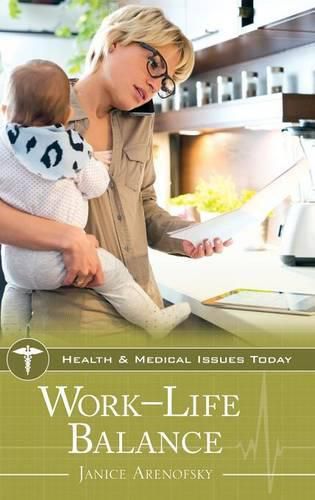Readings Newsletter
Become a Readings Member to make your shopping experience even easier.
Sign in or sign up for free!
You’re not far away from qualifying for FREE standard shipping within Australia
You’ve qualified for FREE standard shipping within Australia
The cart is loading…






This powerful resource investigates how a positive work-life balance can help create engaged, productive employees, how imbalances in work-life balance create serious issues for workers, and identifies different ways to greatly improve one’s work-life balance.
Of the 35 countries in the Organisation for Economic Co-operation and Development (OECD), all except the United States provide nationwide paid maternity leave. This is but one example of how the United States has not made adequate provisions to safeguard the work-life balance of its workforce-to the detriment of the overall economic prosperity of the nation. This insightful book shows how problematic an out-of-balance work-to-life ratio is, gives readers the raw data and information to prioritize their values, and describes tools available for selecting a position that matches an individual’s talents and is congruent with her desired work-life balance.
Work-Life Balance examines the controversies associated with work-life balance in the modern era and emphasizes how winning the struggle to achieve work-life balance requires buy-in from employees, management, and government. Readers will appreciate how optimizing their work-life balance may incorporate employee assistance programs, flextime, improved time management skills, technology-enabled tools, and community programs. The author explains how choosing an appropriate occupation is the first step toward having a positive work-life balance and avoiding the twin scourges of depression and job dissatisfaction. Comparisons between typical benefits in the United States with those in other countries provide data that can be used to advocate and negotiate for greater flexibility, fairness in gender equality, and better employer-employee relationships.
Gives readers an in-depth look at the history of work, from prehistory to the present
Offers practical, scientifically tested solutions to organizational problems such as burnout, absenteeism, and presenteeism
Compares the work-life balance status of the United States with other countries around the world, including those in Europe and Asia
Includes primary documents that emphasize the need for organizational flexibility to allow for creative, de-stressed workers and a satisfied managerial hierarchy
$9.00 standard shipping within Australia
FREE standard shipping within Australia for orders over $100.00
Express & International shipping calculated at checkout
This powerful resource investigates how a positive work-life balance can help create engaged, productive employees, how imbalances in work-life balance create serious issues for workers, and identifies different ways to greatly improve one’s work-life balance.
Of the 35 countries in the Organisation for Economic Co-operation and Development (OECD), all except the United States provide nationwide paid maternity leave. This is but one example of how the United States has not made adequate provisions to safeguard the work-life balance of its workforce-to the detriment of the overall economic prosperity of the nation. This insightful book shows how problematic an out-of-balance work-to-life ratio is, gives readers the raw data and information to prioritize their values, and describes tools available for selecting a position that matches an individual’s talents and is congruent with her desired work-life balance.
Work-Life Balance examines the controversies associated with work-life balance in the modern era and emphasizes how winning the struggle to achieve work-life balance requires buy-in from employees, management, and government. Readers will appreciate how optimizing their work-life balance may incorporate employee assistance programs, flextime, improved time management skills, technology-enabled tools, and community programs. The author explains how choosing an appropriate occupation is the first step toward having a positive work-life balance and avoiding the twin scourges of depression and job dissatisfaction. Comparisons between typical benefits in the United States with those in other countries provide data that can be used to advocate and negotiate for greater flexibility, fairness in gender equality, and better employer-employee relationships.
Gives readers an in-depth look at the history of work, from prehistory to the present
Offers practical, scientifically tested solutions to organizational problems such as burnout, absenteeism, and presenteeism
Compares the work-life balance status of the United States with other countries around the world, including those in Europe and Asia
Includes primary documents that emphasize the need for organizational flexibility to allow for creative, de-stressed workers and a satisfied managerial hierarchy